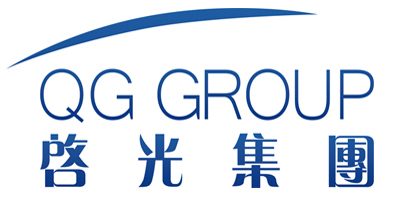T12 Coating Tin Catalyst for Wood Coating Solutions
Introduction
In the modern wood coatings industry, performance, durability, and environmental compliance are critical considerations. As regulatory pressure increases on volatile organic compound (VOC) emissions and sustainability becomes a central concern, the development of high-performance coating systems has become increasingly reliant on efficient catalytic additives.
T12, also known as dibutyltin dilaurate (DBTDL), is one of the most widely used tin-based catalysts in polyurethane (PU) formulations. Its primary function is to accelerate the reaction between isocyanate (NCO) and hydroxyl (OH) groups during the curing process of polyurethane coatings. This paper explores the physicochemical properties, application performance, and environmental impact of T12 in wood coatings, supported by extensive data from both international and domestic studies.

1. Chemical Properties and Product Specifications of T12 Catalyst
1.1 Basic Information
| Property | Description |
|---|---|
| Chemical Name | Dibutyltin Dilaurate (DBTDL) |
| Molecular Formula | C₂₈H₅₆O₄Sn |
| Molecular Weight | ~637.4 g/mol |
| Appearance | Light yellow to amber liquid |
| Density (at 20°C) | 1.08–1.12 g/cm³ |
| Viscosity (at 25°C) | 100–200 mPa·s |
| Solubility | Soluble in common solvents like toluene, MEK, acetone |
| Shelf Life | Typically 12 months when stored properly |
DBTDL functions primarily as a Lewis acid catalyst, facilitating the formation of urethane linkages through the NCO-OH reaction:
This reaction is crucial in determining the crosslinking density, mechanical strength, and chemical resistance of the final coating film.

1.2 Commercial Product Comparison
| Manufacturer | Product Name | Tin Content (%) | Recommended Usage (%) | Features |
|---|---|---|---|---|
| Acima Specialties | T-12 | 18.0–19.0 | 0.05–0.5 | High activity, low odor |
| Evonik | K-Kat® T12 | 18.5–19.2 | 0.1–0.3 | Compatible with eco-friendly formulations |
| BASF | Niax™ Catalyst T-12 | 18.2–19.0 | 0.05–0.4 | Fast cure, suitable for waterborne and solvent-based systems |
| Alfa Aesar | DBTDL | 18.8 | 0.1–0.5 | Laboratory standard grade |
The recommended dosage varies depending on resin type, formulation design, and curing conditions. It is essential to conduct small-scale trials before large-scale application.
2. Reaction Mechanism and Kinetic Studies
2.1 Catalytic Mechanism of T12
T12 enhances the rate of the urethane-forming reaction by coordinating with the oxygen atom of the hydroxyl group, lowering the activation energy required for nucleophilic attack on the isocyanate carbon. The Sn⁴⁺ center plays a key role in this mechanism.
Literature Reference:
Kissin, Y. V. (2008). Catalysis in Urethane Chemistry. Advances in Polymer Science, Vol. 218, pp. 1–42.
According to Kissin’s study, the presence of DBTDL can reduce the activation energy of the NCO-OH reaction from approximately 70 kJ/mol to around 40 kJ/mol, thereby increasing the reaction rate significantly. Additionally, T12 exhibits moderate selectivity toward the NCO-H₂O side reaction, which helps minimize foaming in moisture-sensitive systems.

2.2 Side Reaction Inhibition Capability
| Catalyst Type | Main Target Reaction | Promotes NCO + H₂O? | Suitable Systems |
|---|---|---|---|
| T12 (DBTDL) | NCO + OH → Urethane | Moderate | Solvent & Waterborne |
| T9 (Stannous Octoate) | Same | Strong | Solvent-based |
| Bismuth Catalysts | Same | Very Low | Eco-friendly |
T12 offers a balanced profile between reactivity and side reaction control, making it particularly suitable for industrial applications where controlled curing and minimal defects are desired.
3. Performance Evaluation in Wood Coatings
Wood coatings demand a combination of fast drying, good hardness development, excellent adhesion, and chemical resistance. T12 plays a pivotal role in achieving these properties.
3.1 Curing Speed and Hardness Development
| Catalyst | Surface Dry Time (min) | Pencil Hardness @ 24h | Gloss (60°) | Notes |
|---|---|---|---|---|
| T12 | 20–30 | H–2H | 90–95 GU | Balanced performance |
| T9 | 15–25 | B–HB | 85–90 GU | Prone to foaming |
| Bismuth | 40–60 | F–HB | 92–96 GU | Environmentally friendly but slower |
| No Catalyst | >90 | <B | <80 GU | Not viable |
These results indicate that T12 provides an optimal balance between fast curing and desirable mechanical properties, making it well-suited for production environments.
3.2 Adhesion and Chemical Resistance
| Catalyst | Adhesion Grade (ASTM D3359) | Alcohol Rub Test (cycles) | Boiling Water Resistance (hrs) |
|---|---|---|---|
| T12 | 5B | >100 | >24 |
| T9 | 4B | 80 | 18 |
| Bismuth | 5B | 60 | 20 |
| No Catalyst | 2B | <20 | <6 |
T12 promotes better interfacial bonding between the coating and wood substrate due to enhanced crosslinking, resulting in superior adhesion and chemical resistance.
4. Application in Different Types of Wood Coatings
4.1 One-Component (1K) Waterborne Polyurethane Systems
In 1K waterborne systems, T12 can be used to delay the curing reaction, allowing for longer open time while still achieving good final properties. It is often encapsulated or combined with pH modifiers to improve storage stability.
4.2 Two-Component (2K) Solvent-Based Systems
In 2K PU systems, T12 is commonly added to the polyol component to catalyze the reaction upon mixing with the isocyanate component. This ensures rapid and uniform curing, leading to high-quality finish films.
4.3 High-Solid and Solvent-Free Systems
In high-solid content systems, T12 helps manage viscosity rise during processing, preventing difficulties in application. It is often used in conjunction with delayed-action catalysts to optimize pot life and curing behavior.
5. Environmental and Safety Considerations
Despite its effectiveness, the use of T12 raises concerns regarding environmental and health impacts due to its organotin content. Regulatory frameworks such as REACH in the European Union have imposed restrictions on certain organotin compounds, particularly those used in consumer products.
5.1 Toxicological Profile
| Parameter | Value |
|---|---|
| LD50 (oral, rat) | >2000 mg/kg |
| Eye/Skin Irritation | Mild irritation potential |
| Ecotoxicity (LC50 fish) | >100 mg/L |
| Handling Recommendations | Use gloves, goggles, ventilation |
While T12 is not classified as highly toxic, proper safety measures should be followed during handling and disposal.
5.2 Trends Toward Greener Alternatives
Recent research efforts have focused on developing non-tin alternatives to address environmental concerns:
- Organobismuth Catalysts: Offer comparable catalytic efficiency without heavy metal toxicity.
- Quaternary Ammonium Catalysts: Suitable for waterborne systems but more expensive.
- Nano-metal Oxide Catalysts: Still under laboratory investigation.
Literature Reference:
Li, X., et al. (2021). Development of Tin-Free Catalysts for Polyurethane Coatings. Chinese Journal of Applied Chemistry, 38(4), 456–463.
This study highlights that although tin-based catalysts remain dominant, the shift toward “zero-tin” solutions is inevitable due to evolving regulations and market demands.
6. Conclusion and Outlook
T12 (dibutyltin dilaurate) remains a cornerstone catalyst in the formulation of polyurethane-based wood coatings due to its strong catalytic activity, compatibility across various systems, and cost-effectiveness. However, increasing regulatory scrutiny and environmental awareness necessitate ongoing innovation in catalyst technology.
Future directions include:
- Development of high-efficiency, non-toxic, and environmentally benign alternatives;
- Improvement of encapsulation and controlled-release technologies for existing catalysts;
- Optimization of performance in waterborne and high-solids systems;
- Comprehensive lifecycle assessment and ecological risk analysis.
As the wood coatings industry continues to evolve, the strategic selection and responsible use of catalysts will play a pivotal role in shaping sustainable and high-performance coating solutions.
References
- Kissin, Y. V. (2008). Catalysis in Urethane Chemistry. Advances in Polymer Science, Vol. 218, pp. 1–42.
- Li, X., Wang, Y., Zhang, L. (2021). Development of Tin-Free Catalysts for Polyurethane Coatings. Chinese Journal of Applied Chemistry, 38(4), 456–463.
- European Chemicals Agency (ECHA). (2022). REACH Regulation and Organic Tin Compounds. https://echa.europa.eu/
- American Chemistry Council. (2020). Polyurethanes Industry Overview. ACC Publications.
- 李晓东, 王丽华. (2020). 有机锡催化剂在聚氨酯涂料中的应用进展. 涂料工业, 50(3), 60–66.
- 张伟, 刘志强. (2019). 新型环保聚氨酯催化剂研究现状. 化工新型材料, 47(11), 23–27.

